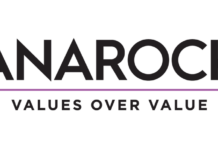 Existing home sales in the United States slowed last month but total sales were the highest in five years, according to the latest data from the National Association of Realtors.
Existing home sales in the United States slowed last month but total sales were the highest in five years, according to the latest data from the National Association of Realtors.
Its latest monthly report also shows that limited inventory meant that prices have continued to rise and are expected to continue doing so in 2013.
Total existing home sales, which are completed transactions that include single family homes, town homes, condominiums and co-ops, fell by 1% to a seasonally adjusted annual rate of 4.94 million in December from a downwardly revised 4.99 million in November, but are 12.8% above the 4.38 million level of December 2011.
The preliminary annual total for existing home sales in 2012 was 4.65 million, up 9.2% from 4.26 million in 2011. It was the highest volume since 2007 when it reached 5.03 million and the strongest increase since 2004.
The national median existing home price for all housing types was $180,800 in December, which is 11.5% above December 2011. This is the 10th consecutive month of year on year price gains, which last occurred from August 2005 to May 2006, and is the strongest increase since November 2005 when it jumped 12.9%.
For all of 2012, the preliminary median existing home price was $176,600, up 6.3% from $166,100 in 2011, and was the strongest annual price gain since 2005 when the median price rose 12.4%.
Pent up demand is sustaining the market according to NAR chief economist Lawrence Yun. ‘Record low mortgage interest rates clearly are helping many home buyers, but tight inventory and restrictive mortgage underwriting standards are limiting sales,’ he said.
‘The number of potential buyers who stayed on the sidelines accumulated during the recession, but they started entering the market early last year as their financial ability and confidence steadily grew, along with home prices. Likely job creation and household formation will continue to fuel that growth. Both sales and prices will again be higher in 2013,’ he added.
Total housing inventory at the end of December 2012 fell 8.5% to 1.82 million existing homes available for sale, which represents a 4.4 month supply at the current sales pace, down from 4.8 months in November, and is the lowest housing supply since May of 2005 when it was 4.3 months, which was near the peak of the housing boom.
Listed inventory is 21.6% below a year ago when there was a 6.4 month supply. Raw unsold inventory is at the lowest level since January 2001 when there were 1.78 million homes on the market.
Distressed homes, that is foreclosures and short sales, accounted for 24% of December sales of which 12% were foreclosures and 12% were short sales, up from 22% in November but below the 32% recorded in December 2011. Foreclosures sold for an average discount of 17% below market value in December, while short sales were discounted 16%.
NAR president Gary Thomas said that affordability conditions will be fairly stable in the near term. ‘Although mortgage interest rates should gradually rise as the year progresses, they’re expected to stay below 4% during the first half of the year, meaning qualified buyers generally can stay well within their means,’ he explained.
‘Although tight inventory is limiting home sales in many areas, overall sales are expected to stay on an upward trend. The biggest impact of tight inventory is upward pressure on home prices, but after values fell below replacement construction costs, prices are still affordable in most of the country,’ he added.
The median time on market for all homes was 73 days in December, up from 70 days in November, but is 26.3% below the 99 days in December 2011. Short sales were on the market for a median of 117 days, while foreclosures typically sold in 45 days and non distressed homes took 74 days. Some 31% of all homes sold in December were on the market for less than a month.
First time buyers accounted for 30% of sales in December, unchanged from November and slightly less than the 31% recorded in December 2011.
All cash sales made up 29% of transactions in December compared with 30% in November and 31% in December 2011. Investors, who account for most cash sales, bought 21% of homes in December, up from 19% in November, and the same as December 2011.
Single family home sales slipped 1.4% to a seasonally adjusted annual rate of 4.35 million in December from 4.41 million in November, but are 11.5% above the 3.9 million sold in December 2011. The median existing single family home price was $180,300 in December, up 10.9% from a year ago.
Existing condominium and co-op sales rose 1.7% to an annualized level of 590,000 in December from 580,000 in November, and are 22.9% higher than a year ago. The median existing condo price was $184,100 in December, up 16% from December 2011.
Regionally, existing home sales in the Northeast rose 3.2% to an annual rate of 640,000 in December and are 10.3% above December 2011. The median price in the Northeast was $231,600, up 5.3% from a year ago.
Existing home sales in the Midwest fell 5.9% in December to 1.12 million but are 15.5% higher than a year ago. The median price in the Midwest was $144,800, which is 12.3% above December 2011.
In the South, existing home sales fell 3% to an annual level of 1.95 million in December but are 14.7% above December 2011. The median price in the South was $161,100, up 11% from a year ago.
Existing home sales in the West rose 5.1% to 1.23 million in December and are 8.8% higher than a year ago. The median price in the West was $239,900, which is 17.3% above December 2011.
US home sales reach highest level despite falling back slightly last month
0 - 0






